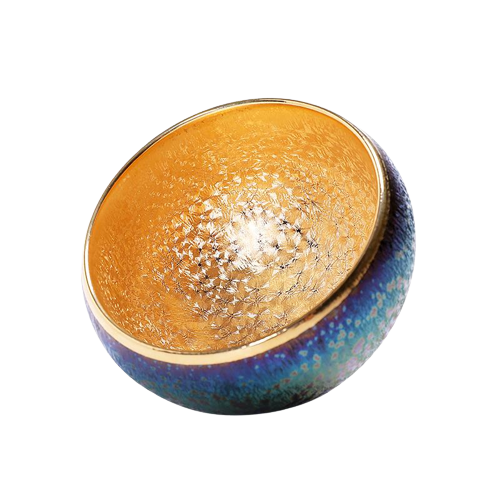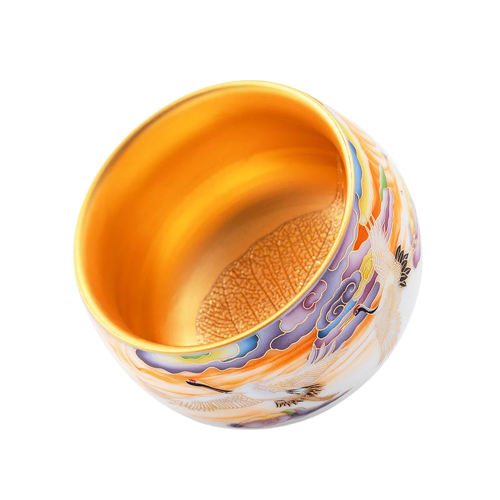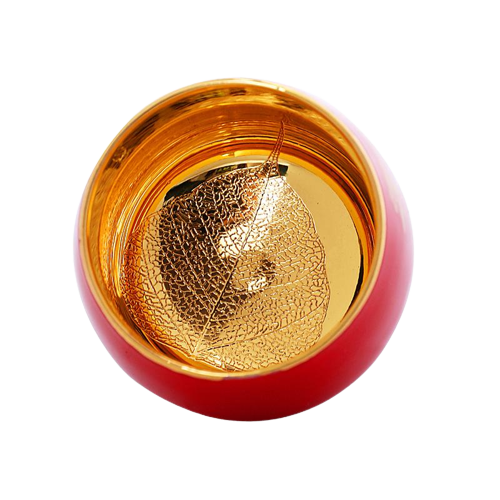What is the difference between Porcelain & Ceramic? This question frames distinctions that matter to collectors and makers. Many people treat the two terms as interchangeable without noticing critical properties. Porcelain and ceramic differ in firing temperature, density, and raw materials. These differences change translucency, glaze behavior, and water absorption significantly. Choosing the right material affects function and longevity for teaware or tableware. The following sections examine core technical contrasts and practical implications. Readers will gain clear, evidence-based criteria for selecting items. Avoiding vague claims, the text relies on measurable factors and historical context.
What is the difference between Porcelain & Ceramic: Firing Temperature
Porcelain typically fires at much higher temperatures than common ceramics. High vitrification occurs above 1300°C in many porcelain processes. Ceramic bodies often mature between 800°C and 1100°C depending on formulation. Higher firing produces denser, glass-like porcelain bodies. Lower firing often leaves more porosity in typical ceramics. This thermal contrast explains differences in sound, density, and translucence. Manufacturers choose firing ranges to optimize strength or texture. When evaluating teacups, check reported maturation temperatures. Technical sheets and kiln logs provide reliable verification for serious buyers.
What is the difference between Porcelain & Ceramic: Density and Hardness
Porcelain tends to sound clearer and feel harder under percussion than ceramic. Dense vitrified porcelain resists surface abrasion and resists scratching with common metals. Typical ceramic bodies may display softer matrices and show groove marks if tested. Water absorption correlates with density, so porcelain often absorbs far less liquid. Lower porosity translates into better resistance to staining and faster sanitary cleaning. Ceramics with greater absorption often need glaze sealing for safe food contact. When selecting teaware, prioritize denser bodies for longevity and hygiene considerations.
What is the difference between Porcelain & Ceramic: Raw Materials
Porcelain relies on refined clays like kaolin combined with feldspar and silica. These ingredients tolerate very high firing temperatures without melting into glass. Typical ceramics may use broader classes of natural clays and tempering materials. The specific mineralogy controls plasticity, shrinkage, and final color. Kaolin-rich porcelain bodies develop white, translucent carcasses when vitrified properly. Clay mixtures for earthenware keep lower maturation points but remain more porous. Suppliers usually list raw material composition in technical documents. Analysts and conservators often test fragments to confirm origin and processing.
Transparency and Light Transmission Differences
Porcelain often shows translucency when thin, while most ceramics remain opaque. Light can pass through porcelain shards under a lamp due to its glassy matrix. This quality contributes to the refined look of fine tableware and delicate teacups. Opaque ceramics emphasize robust, rustic aesthetics and heavy-duty utility. The choice between translucence and opacity affects perceived value and display preferences. Artists exploit translucency for thin-walled teacups to emphasize liquid color. Practical users prefer opaque ceramics for rugged daily use without risk of breakage revealing thin areas.
Glaze Behavior and Surface Finish Contrasts
Glaze compositions and firing sequences differ between porcelain and ceramic bodies. Porcelain tolerates high-temperature glazes applied before or during single firing cycles. Some porcelain items receive a second, lower-temperature glaze firing for decorative effects. Ceramic bodies often accept low-melt glazes that flow at lower temperatures. These lower-temperature glazes may present different textures and color ranges. Crazing and glaze fit issues arise when thermal expansion mismatches occur. Understanding how glazes interact with the body prevents defects. Knowledgeable buyers examine glaze thickness, crazing tendency, and firing technique.
Water Absorption and Practical Use
Porcelain typically records water absorption below 0.5 percent, making it ideal for liquid vessels. Ceramics often show higher absorption, commonly above five percent without glaze. The lower absorption of porcelain reduces staining and microbial retention. For teaware and food contact, porcelain offers practical hygiene advantages. Ceramic ware requires complete and intact glaze layers for safe, long-term use. Household users should avoid leaving liquids long in porous ceramics. Manufacturers sometimes apply protective sealants to ceramic surfaces to mitigate absorption concerns.
How to Test: Simple Home Checks and Professional Methods
You can perform quick tests that hint at the material class without lab tools. Tap a thin edge; a bright, bell-like tone suggests porcelain. Hold a thin shard to a bright lamp; translucence implies porcelain. Apply a water droplet on an unglazed area; rapid absorption suggests earthenware ceramic. For precise identification, X-ray fluorescence or petrographic analysis provides conclusive results. Conservators and labs can quantify mineral content and firing temperatures. These professional assessments are useful for collectors of JianZhan teacups or Tenmoku teacups seeking provenance evidence.
Practical Selection for Teaware and Tableware
Select porcelain when you need low absorption and refined appearance. Porcelain teacups highlight liquor color and resist long-term staining. Ceramic pottery suits rustic dinnerware and heavy-use scenarios. For outdoor service or casual kitchens, robust ceramics reduce breakage risk from knocks. Consider the intended use, frequency of washing, and desired aesthetic before choosing. Makers produce tenmoku-style porcelain teacups that combine traditional surface effects with porcelain advantages. Matching material to lifestyle keeps performance aligned with expectations.
List of Key Differences
-
Firing temperature range
-
Degree of vitrification and density
-
Raw material composition such as kaolin presence
-
Light transmission and translucency
-
Glaze firing methods and fit behavior
-
Water absorption and hygiene suitability
What is the difference between Porcelain & Ceramic in direct terms appears clear when viewed through these six categories. These points summarize scientific and practical contrasts. Buyers and makers get a concise checklist to compare samples. Each line reduces uncertainty when choosing plates, bowls, or teacups. The list supports quick decision making without sacrificing technical accuracy.
Practical Buying Tips After the Summary
When shopping, ask sellers for technical data or country of origin. Inspect thinness and translucence under bright light. Check for consistent glaze and absence of hairline crazing. Test a small area with water on an unglazed foot to check absorption. Choose porcelain for professional teaware or frequent dishwashing. Opt for ceramic pieces when seeking earthy textures and durable workhorse items. Makers of porcelain teacups often mark bodies, so verify marks when possible. These pragmatic steps translate material science into everyday selection choices.
Comparison Table: Key Properties
| Property | Porcelain | Ceramic (Earthenware) |
| Typical Firing Temp | Above 1300°C | 800–1100°C |
| Water Absorption | <0.5% | >5% |
| Translucency | Often yes | Usually no |
| Common Use | Fine tableware, teacups | Everyday pots and tiles |
What is the difference between Porcelain & Ceramic becomes obvious when comparing these technical metrics. The table distills essential performance factors into an at-a-glance resource. Conservators, potters, and buyers can rely on these numbers when making functional choices. The comparison clarifies why porcelain often commands higher prices for fine teaware.
Care, Cleaning, and Longevity Considerations
Porcelain resists staining and withstands frequent dishwasher cycles if glazed properly. Ceramic pieces need intact glaze to avoid absorption and color change. Use mild detergents and soft cloths to preserve finishes. Avoid thermal shock by pre-warming porcelain vessels before pouring boiling liquids. For ceramics, avoid prolonged soaking in hard water with minerals that can penetrate pores. Proper storage reduces chips and long-term moisture effects. Routine maintenance protects both porcelain and ceramic investments.
Sourcing, Authenticity, and Cultural Context
Historical pieces like traditional JianZhan teacups are often porcelain by specific processes. Regional kiln traditions influence material practices and local vocabulary. Authentication sometimes relies on maker marks and kiln records, and provenance can affect value significantly. Museums and auction houses frequently commission laboratory testing to confirm assertions. Buyers seeking genuine period items should request documentation and lab reports. Such diligence protects collectors against misattributed or misdescribed pieces.
What is the difference between Porcelain & Ceramic: Final Recommendations
For teaware, choose porcelain when low absorption and refined appearance matter most. Ceramics offer broader textures and lower cost for everyday use. Consider firing range, density, and glaze fit as core decision variables. When in doubt, consult technical data or request material samples. The contrast between porcelain and ceramic is not merely semantic. It reflects centuries of technological refinement and functional specialization. Selecting the right material improves performance, aesthetics, and durability.
Frequently Asked Questions
Why does porcelain cost more than many ceramic pieces?
Porcelain often costs more due to refined raw materials and higher processing energy. Kaolin and controlled mineral blends add expense. Kiln fuel and longer firing times increase manufacturing costs. The lower yield and higher technical standards for vitrification also raise prices. Finer finishing and translucency create additional value. Makers invest in quality control and more precise glazing protocols. These investments translate to higher market prices for porcelain teacups and tableware. Buyers pay a premium for performance, hygiene, and aesthetic refinement.
Can ceramic be made to match porcelain performance?
Skilled potters can approach porcelain-like performance with blended bodies and refined glazing. However, achieving true vitrification requires high firing ranges and specific mineralogy. Some stoneware formulas mature at mid-high temperatures and show reduced absorption. Advances in glazes and sintering technology further close the gap. Still, the classic distinction remains: porcelain attains near-glass density and translucence under defined conditions. Practical compromises allow ceramics to perform well in many daily applications while offering distinct character.
How can I verify a teacup is genuine porcelain or ceramic?
Verification starts with visual and tactile checks at home. Thinness and light transmission suggest porcelain. A clear, resonant ring on a light tap supports the same conclusion. For authoritative verification, laboratory analysis provides mineral composition and firing temperature estimates. X-ray diffraction and petrographic thin sections reveal mineral phases and vitrification. Conservation labs deliver reports that museums and collectors use to establish provenance. When buying valuable teaware, request professional verification to ensure authenticity and expected performance.







